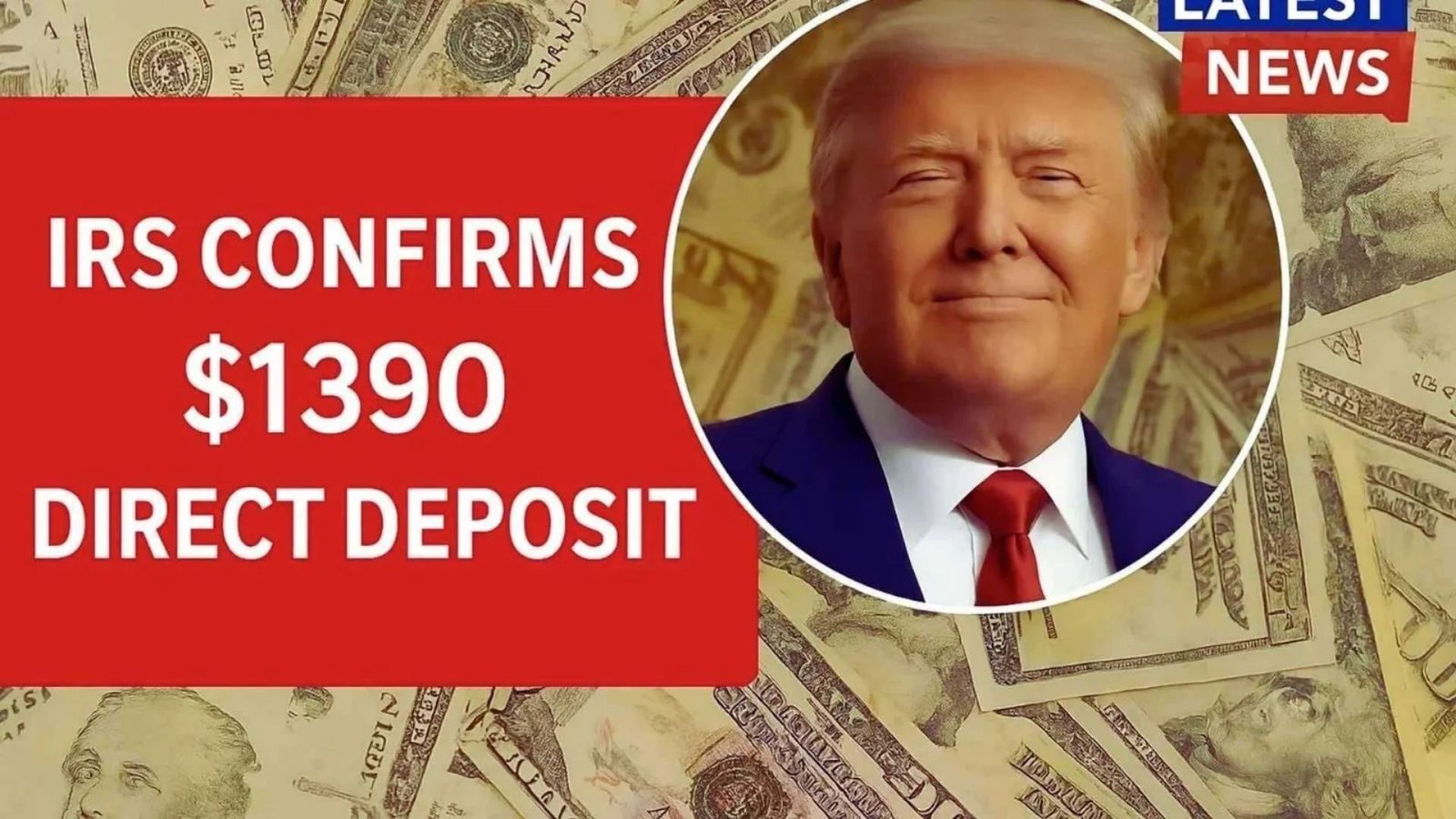Imagine scrolling through your feed and spotting a headline promising $1,390 IRS direct deposit straight to your account this November payment date. Your heart races—could this be the financial breather you’ve been waiting for? In a world of rising bills and economic whispers, this rumor has everyone buzzing. But hold on: what if it’s not quite the jackpot it seems? Stick with me as we peel back the layers of this mystery, revealing twists that could save your wallet and keep you one step ahead.
What Is This $1,390 IRS Direct Deposit Rumor?
At first glance, the IRS $1,390 direct deposit sounds like a lifeline—a no-strings stimulus boost for “everyone” hitting banks in early November 2025. Whispers claim it’s tied to unclaimed credits or economic relief, arriving via direct deposit for speed. But here’s the hook: is this a hidden gem or a cleverly disguised trap? Dive deeper, and you’ll uncover depths that blur the line between hope and hype, urging you to question every viral alert.
The Surprising History of IRS Stimulus Payments
Flash back to 2020: the CARES Act birthed the first $1,200 stimulus checks, a frantic response to COVID chaos. Untold stories emerge—like how the IRS scrambled to deploy $1.4 trillion, fumbling addresses and sparking a fraud frenzy. Fast-forward through three rounds, peaking at $1,400 per person, and you see a pattern: bold moves born from crisis, but always with deadlines that vanish like smoke. This $1,390 echo? It nods to those Recovery Rebate echoes, teasing a revival that’s equal parts nostalgia and nerve-wracking what-if.
Why the $1,390 Rumor Matters More Than Ever in 2025
Today, with inflation nipping at heels and election echoes fading, this tale ignites excitement for quick cash infusions. It’s relevant because it taps our deepest wish: relief without the red tape. Imagine easing holiday stress or padding that emergency fund— the impact could ripple through families nationwide. Yet, in this digital age of deepfakes and doom-scrolling, ignoring it risks real fallout. The buzz builds urgency: will it deliver joy, or just disappointment? Your financial peace hangs in the balance.
How to Verify and Benefit from Real IRS Opportunities
Engaging isn’t about chasing ghosts—it’s arming yourself with tools for legit wins. Start by logging into your IRS account at irs.gov to track refunds or credits; many snag direct deposit boosts within 21 days of filing. Benefit game-changer? Claim overlooked rebates from 2021 before it’s too late (spoiler: that window slammed shut April 2025). Pro tip: Set up alerts for true announcements. This isn’t just checking boxes—it’s turning potential pitfalls into personalized payouts that feel like insider wins.
| Real IRS Stimulus Rounds vs. $1,390 Rumor | Amount per Adult | Eligibility | Delivery Method | Timeline |
|---|---|---|---|---|
| Round 1 (2020 CARES Act) | $1,200 | Most taxpayers under $75K income | Direct deposit or check | April-May 2020 |
| Round 2 (2020 Consolidated Act) | $600 | Same as Round 1 | Direct deposit preferred | Dec 2020-Jan 2021 |
| Round 3 (2021 American Rescue Plan) | $1,400 | Expanded to $75K+ with kids | Direct deposit fastest | March-April 2021 |
| $1,390 Rumor (2025 Claim) | $1,390 | “Everyone” (unverified) | Direct deposit Nov 3-10 | November 2025 (unconfirmed) |
This table spotlights contrasts that amp the intrigue—real history vs. hazy hype.
Jaw-Dropping Facts and Stats on IRS Payments
Did you know the IRS disbursed over $800 billion in stimulus during the pandemic, touching 85% of adults? Jaw-dropper: One in five missed their cut, totaling $100 billion in unclaimed funds. And get this—direct deposit users got paid 10 days faster than paper checks, slashing wait anxiety. These nuggets aren’t just numbers; they’re proof of the system’s power—and why rumors like the November payment date explode, preying on our payout dreams.
| Key IRS Payment Stats | Figure | Insight |
|---|---|---|
| Total Stimulus Distributed (2020-2021) | $814 billion | Covered 476 million payments— a lifeline for millions. |
| Unclaimed Recovery Rebate Funds | ~$100 billion | Deadline passed April 2025; file now for other credits! |
| Direct Deposit Success Rate | 80% of recipients | Speeds funds by up to 2 weeks vs. mail. |
| Scam Reports Tied to Fake Stimulus (2024) | 2.6 million | FTC warns: Up 20% from prior year, costing $10B. |
These stats? Pure eye-openers, revealing the scale and stakes.
Insider Secrets: Expert Tips to Navigate IRS Alerts
Veteran tax pros spill: Always verify via official IRS channels—never click unsolicited links promising $1,390 stimulus. Secret #1: Use the IRS2Go app for real-time nudges. #2: Cross-check with free tools like VITA for filing help, unlocking hidden refunds. And the clincher? If it demands upfront fees, it’s foul—true aid is free. These gems feel like cheat codes, empowering you to sidestep shadows and seize sunlight.
Frequently Asked Questions About the $1,390 IRS Buzz
Q: Is the IRS $1,390 direct deposit really happening in November 2025?
A: Nope—it’s a viral hoax. No official word from IRS; fact-checks from FOX and FTC label it scam bait. The real twist? It mimics expired 2021 rebate claims.
Q: How do I check my actual November payment date for refunds?
A: Head to irs.gov’s “Where’s My Refund?” tool. Enter your details for ETA—direct deposit hits in 21 days max.
Q: Could this tie to new stimulus laws?
A: Unlikely. Post-2021, no broad relief passed. Watch for tax season tweaks, but always official sources.
Q: What if I get a suspicious IRS email about this?
A: Delete it. IRS never asks for info via email—report to
Q: Any legit ways to get fast cash from IRS now?
A: Yes! Amend old returns or grab Earned Income Credit. Tools like Free File make it painless.
In wrapping this whirlwind, the IRS $1,390 direct deposit saga underscores a timeless truth: In finance’s foggy maze, vigilance is your North Star. No windfall this November payment date, but the real payoff? Armed knowledge to dodge scams and claim what’s yours. Dive into irs.gov today, share this wake-up with friends, and let’s turn rumors into readiness. What’s your next money move? Drop it below—your story might spark someone’s savvy.



